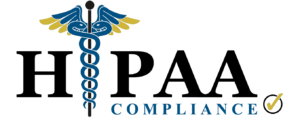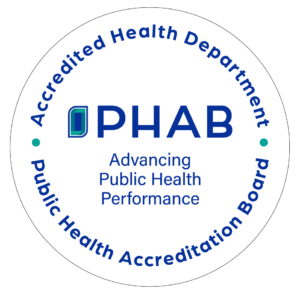NEWS RELEASE 15:11
FOR IMMEDIATE RELEASE
Date: March 26, 2015
Contact: Bill Wiseman, Public Information Officer, 410-612-1771
RELEASE OF 2015 ROBERT WOOD JOHNSON FOUNDATION COUNTY HEALTH RANKINGS
Bel Air, MD – March 26, 2015 – The Robert Wood Johnson Foundation (RWJF) has announced the release of its 2015 national County Health Rankings report. The rankings, now in their sixth year, are broken down into two major categories: health outcomes and health factors, each of which represents a weighted summary of various measures. An overview of the findings reflects health status in Harford remains stable.
Harford again ranked sixth in the state with respect to health factors, representing what influences the health of the county, while also maintaining its rank of tenth among the 24 jurisdictions throughout Maryland in health outcomes, representing how healthy a county is. The county ranked seventh overall with respect to length of life, where rates of premature death were significantly lower than the state average and are trending favorably toward even lower rates.
The County Health Rankings & Roadmaps is compiled annually by the Robert Wood Johnson Foundation and the University of Wisconsin Population Health Institute. A rich resource of local-level data using county-level indicators from a variety of national and state data sources, the Rankings are an easy-to-use snapshot of the health of nearly all counties in the nation that includes rankings within states on 30 factors that impact health.
The report helps illustrate that how long and how well people live depends on multiple factors including rates of smoking, education, and access to healthy food, while also helping to lay the groundwork for health improvement efforts at state and local levels. Harford County Health Officer, Susan Kelly references the County’s Local Health Improvement Process (LHIP) that was launched in 2011 for purposes of identifying the County’s most critical health needs and targeting them for action.
Says Ms. Kelly, “A large and diverse Coalition comprised of agency representatives and community stakeholders has spent the past three years developing strategies that address three health priority areas identified in the County: obesity, tobacco use and behavioral health. We are in a unique position to bring community partners together to collaborate and to understand how public health impacts our lives in so many ways. Also, as part of the Maryland Department of Health and Mental Hygiene’s statewide initiative addressing 39 key health measures in five focus areas, we are exploring ways to decrease premature deaths in our county.”
However, Ms. Kelly cautions that the rankings do not provide a totally clear nor comprehensive conclusion about health status in Harford or elsewhere. “Although the information contained in these annual reports is useful in targeting issues and motivating strategic planning, there are other influences that must be considered that also affect those rankings.” Included among them is the selection or exclusion of specific measurement criteria used to rank counties, as well as the influence of respondents’ self-reported perceptions about their physical and mental health.
Composing half of the “health factors” category, Harford achieved RWJ report rankings of fifth and sixth best in the state in “health behaviors” and “clinical care”, respectively.
Ratings among Health Behaviors categories varied when compared to State averages, having improved in several areas while slipping in a few, as well. Rates of physical inactivity were the same as for the State. However, in the categories of factors that contribute to a healthy food environment, access to exercise opportunities, alcohol-impaired driving deaths, sexually transmitted infections and teen births, Harford’s rates were better than State averages. In the categories of current adult smokers, adult obesity and excessive drinking, Harford’s rates were worse. Wherein the County’s LHIP initiative currently focuses on all three of these areas, Health Department Deputy Health Officer Dr. Russell Moy comments, “While we are gratified with the progress we have made to date, these remain critical areas that warrant ongoing attention as well as the full support of our community partners and the public in achieving improvement.”
Clinical care takes into consideration factors of “Access to Care” and “Quality of Care.” In the category of “Uninsured” defined as “the percentage of the County population under age 65 without health insurance”, Harford’s rate of only 9% not only surpassed the State average of 12%, but also was better than the rate of 11% among the top performers in the nation. Ms. Kelly expressed her optimism over that number and alluded to the success of many events sponsored throughout Harford and across Maryland by the state’s health insurance marketplace to inform individual and families about their health coverage options under the federal Affordable Care Act. However, the ratio of the population to primary care providers, dentists and mental health providers is consistently higher in Harford than the State average.
The county’s lowest ranking of 14th was in the area of physical environment, Whereas Harford fares slightly better than the State average in air pollution, drinking water violations and severe housing problems, rates were worse in the areas of driving alone to work and lengthy commutes of more than thirty minutes.
The RWJF website describes the design of the County Health Rankings as more than a lengthy listing of health indicators. Instead, it serves as a call to action, where the use of ranks can draw attention to community health issues. Ms. Kelly agrees, stating, “The Rankings point to areas where more in-depth analysis might be helpful, while also reinforcing the critical need for collaborative relationships. By using these measures as a tool as well as an incentive, we can create opportunities to engage businesses, health-care providers, government, consumers, our local health department and community leaders in exploring ways to help Harford Countians live longer, healthier lives.”
While Ms. Kelly hopes the rankings would inspire changes needed to rise in the rankings, she acknowledges that a great deal depends on the health decisions and behaviors of Harford County residents. “Looking only at our rates and ranking versus other Maryland counties, it appears that Harford is relatively healthy by comparison. However, we recognize there are disparities relative to race and ethnicity and challenging issues left with which to deal.”
To link to the County Health Rankings report or for more information about the Harford County’s Local Health Improvement Process, visit the Harford County Health Department website at: www.harfordcountyhealth.com.
# # # # #


